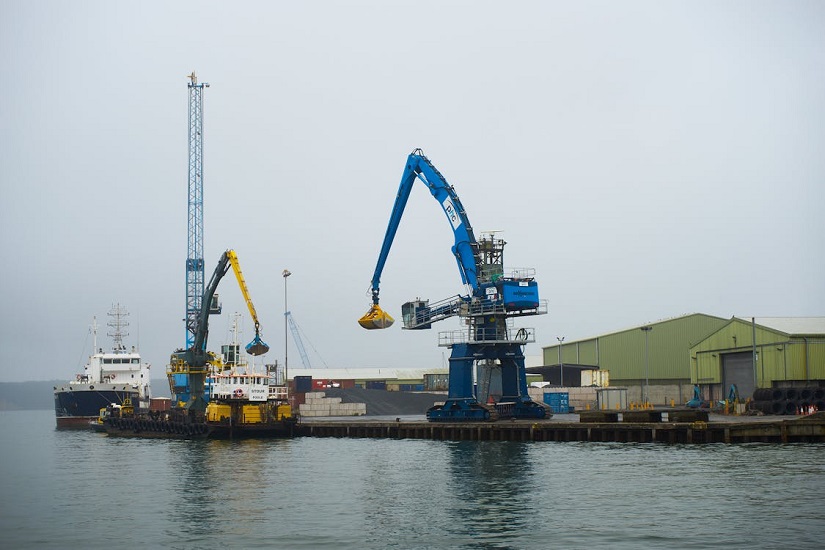The Looming Threat: US Navy’s Vulnerability in the Face of Chinese Naval Might
The United States Navy finds itself at a critical juncture, grappling with deep-rooted shipbuilding challenges that could significantly undermine its capabilities in a potential conflict with China. The specter of an aging fleet, prolonged maintenance backlogs, and sluggish construction rates looms large, casting a shadow of vulnerability over America’s naval prowess. As tensions escalate in the Indo-Pacific region, the vulnerability of the US Navy vis-a-vis China’s formidable naval force and advanced weaponry has become a cause for grave concern among officials and naval experts.
The Achilles’ Heel: Shipbuilding Woes Plague the US Navy
At the heart of the US Navy’s operational woes lies the decaying state of its shipbuilding industry, a once-thriving sector now plagued by a myriad of challenges. The painstakingly slow maintenance and repair processes for existing aircraft carriers, destroyers, and submarines, coupled with the inability to expedite new warship construction, have exposed the vulnerabilities inherent in the Navy’s current fleet management strategies. Year after year, the Navy grapples with delays, cost overruns, and structural deficiencies in new ship construction projects, amplifying concerns over the sustainability and effectiveness of its maritime capabilities in a rapidly evolving geopolitical landscape.

The erosion of the American shipbuilding industry has far-reaching implications, particularly in the Indo-Pacific theater, where a potential clash with China could unfold against a backdrop of asymmetrical naval strengths. With China touting the world’s largest navy and a vast network of shipyards capable of swift vessel production, the prospect of a drawn-out naval conflict poses a daunting challenge for the US Navy. In a scenario where American warships are confronted with a barrage of sophisticated anti-ship missiles and formidable Chinese naval assets, the inadequacies of the US shipbuilding sector are laid bare, jeopardizing the Navy’s ability to respond effectively and sustainably in a high-stakes military engagement.
The China Factor: Rivaling American Naval Dominance
As the geopolitical rivalry between the United States and China intensifies, the disparities in naval capabilities and shipbuilding capacities between the two superpowers come into sharp focus. China’s expansive shipyards teem with activity, churning out a steady stream of warships and commercial vessels at an unprecedented pace, positioning the Chinese Navy as a formidable force to be reckoned with. The efficiency and scale of China’s shipbuilding operations present a stark contrast to the sluggish production rates and resource constraints plaguing the US shipbuilding industry, raising concerns over America’s ability to match China’s naval prowess in a sustained conflict scenario.
Shelby Oakley, a key figure at the US Government Accountability Office overseeing investigations into Navy shipbuilding, has sounded the alarm on the precarious state of the US Navy. Against the backdrop of mounting shipbuilding challenges, budgetary constraints, and personnel recruitment hurdles, the Navy finds itself standing at a crossroads as it grapples with evolving threats from peer adversaries such as China. The urgency of bolstering America’s naval capabilities and revitalizing its shipbuilding sector has never been more pronounced, as strategic imperatives and security concerns converge in the Indo-Pacific region.
Unraveling the Shipbuilding Quandary: Tracing the Root Causes
The fundamental malaise afflicting the US shipbuilding industry can be traced back to its stark transformation since the Cold War era, marking a stark departure from the robust industrial landscape of yesteryears. Today, the Navy relies heavily on a select group of major shipbuilders, including industry giants like Huntington Ingalls Industries, General Dynamics, and Fincantieri Marinette Marine Corporation, to design and construct a diverse array of naval vessels. However, the limited production capacities, infrastructure constraints, and workforce shortages hamper the industry’s ability to meet escalating demands for new warships and expedited repairs.
The chronic delays and budget overruns afflicting the US shipbuilding sector underscore a systemic inadequacy in adapting to evolving geopolitical realities and technological advancements. While China surges ahead with rapid shipbuilding initiatives and cutting-edge naval technologies, the US Navy finds itself grappling with a myriad of obstacles that threaten to undermine its operational readiness and combat effectiveness. Without substantial investments in infrastructure, workforce development, and technology modernization, the US shipbuilding industry risks falling further behind its global counterparts, imperiling America’s strategic position in an increasingly competitive maritime domain.
Navigating Uncertain Waters: Charting a Course for Naval Resilience
As the US Navy confronts the stark realities of its shipbuilding vulnerabilities and operational constraints, urgent remedial measures are imperative to safeguard America’s maritime interests and national security. Addressing the structural deficiencies within the shipbuilding industry, enhancing production capacities, and streamlining maintenance and repair processes are key priorities that demand immediate attention and concerted action. Strategic collaborations with industry stakeholders, technological innovation, and long-term investments in naval modernization are essential to fortifying the Navy’s resilience and readiness in the face of emerging threats and geopolitical dynamics.
In conclusion, the US Navy stands at a critical juncture, grappling with profound shipbuilding challenges that threaten to undermine its operational capabilities and strategic agility in an era of heightened geopolitical tensions. By acknowledging the vulnerabilities and shortcomings within the shipbuilding sector and undertaking proactive measures to revitalize and modernize America’s naval industrial base, the Navy can chart a course towards enhanced resilience, efficacy, and readiness in safeguarding US interests and maintaining strategic superiority in an increasingly complex global maritime landscape. As the specter of conflict looms large on the horizon, the imperative of shoring up America’s naval strength and shipbuilding capacities becomes ever more pressing, underscoring the pivotal role of maritime power in shaping the contours of global security and stability.
Images shown are for comparison only.
